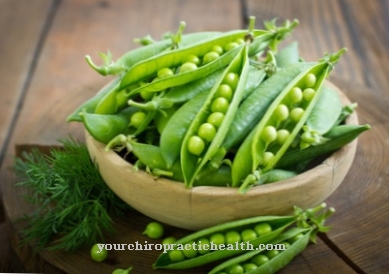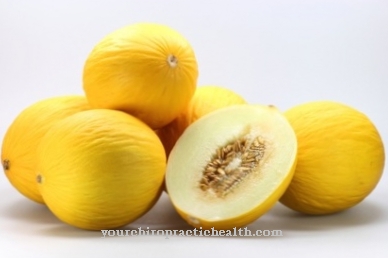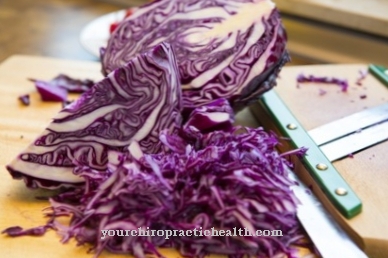Strawberries are by far the most popular fruits of the Germans and are considered to be particularly healthy and tasty. But what makes the red berries so popular and do they have their good reputation rightly?
What you should know about the strawberry

In Germany, the strawberry season begins in mid-May and ends between late July and early August. During this time, fresh strawberries from Germany can be obtained cheaply everywhere. These are considered to be of particularly high quality and are very healthy just because of their freshness.
Outside of this season, strawberries are often on offer, which are also often cheaper than the German goods, but these then come from distant countries such as Spain, Israel or Morocco. The disadvantage of these imported goods is the way they are handled by the manufacturers. In order to preserve the strawberries and to prepare them for long transport, they are often treated with chemicals and pesticides. In rare cases it can happen that foreign goods are labeled as German strawberries. To prevent such fraud, strawberries should always be bought directly from the producer or farmer during the season if possible.
Then, due to the short storage time, they are usually the freshest and contain more natural ingredients and vitamins than when they first have to be transported to the market or the supermarket and temporarily stored there. In some cases they are even a little cheaper than at the dealer. The cheapest and freshest are, of course, home-grown strawberries. On the balcony or in the garden at home, they thrive splendidly during the season when they are pampered with plenty of water, sun and humus-rich soil. Wild strawberries or crosses of garden strawberries are best suited for domestic cultivation.
Strawberries have the best and most intense taste when they have just ripe. This can be recognized by the deep red, even coloring and the fresh green leaves. In addition, ripe strawberries are firm and have an intense, fruity scent. Fruits that are too ripe, on the other hand, are dark red, mushy and the leaves stick to them. Fresh strawberries are characterized by their pleasantly sweet taste and are slightly refreshingly sour.
Importance to health
In the past, strawberries were considered a natural remedy and, because of their extremely high iron content, were used, among other things, to treat anemia. In addition, because of the potassium they contain, strawberries are said to have a positive effect on detoxifying and dehydrating the body, because potassium can stimulate kidney activity.
Toxins can be flushed out of the body better and faster. Strawberries are also high in fiber, which is important for good digestion. The so-called phytochemicals found in strawberries are also said to have a preventive effect on certain types of cancer. Strawberries are also believed to help relieve certain symptoms of rheumatism and gout. In healthy people, strawberries, thanks to their numerous valuable and healthy ingredients such as minerals and vitamins, mainly contribute to a good and robust immune system and thus help prevent the development of diseases.
Above all, the high vitamin C content of 60 milligrams per 100 grams ensures a strong immune system and helps to quickly cover the recommended daily requirement of just under 100 milligrams. A handful of strawberries already covers the daily vitamin C requirement.
Ingredients & nutritional values
Strawberries are very low in calories, especially because of their extremely high water content of almost 90 percent. 100 grams of strawberries have just about 34 calories. The remaining 10 percent are mainly carbohydrates (5.5 grams) and fiber (about 2 grams), with a large proportion of the carbohydrates (about 5.2 grams) being sugar. Since this is not the unhealthy industrially processed sugar, but natural fructose, this is no longer tragic.
The protein content of around 0.8 grams and the fat content of around 0.4 grams, on the other hand, are almost not worth mentioning. In addition to the almost 60 milligrams of vitamin C already mentioned, it also contains vitamin E and vitamins B1, B2 and B6 in very small amounts. In addition, there are the minerals iron, zinc, magnesium, chloride, manganese, sulfur, potassium, calcium, phosphorus and tiny amounts of iodine and fluoride.
Intolerances & allergies
The consumption of strawberries is particularly problematic for people who suffer from fructose and / or histamine intolerance. Like many fruits, strawberries contain the simple sugar fructose, which can lead to various complaints such as diarrhea, nausea or stomach cramps in people with a fructose intolerance.
In the case of histamine intolerance, on the other hand, the organism reacts sensitively to the hormone histamine released by the strawberries during digestion. The consequences range from heartburn and nausea to vomiting, rashes and migraines.
Shopping & kitchen tips
Whenever possible, strawberries should only be bought during the national season, which runs from mid-May to early August. The freshest and therefore also the healthiest goods can be obtained directly from the producer or farmer when buying. For some farmers, the fruit can even be picked directly from the field. If there is no farmer around, the strawberries should at least come from the region.
Since strawberries are very sensitive and perishable, they should be stored covered in the vegetable drawer of the refrigerator for a maximum of two days before consumption. It is best to sort out fruits with bruises directly, as they tend to mold quickly. Wash the strawberries thoroughly before processing and remove the stems and leaves. Strawberries keep much longer frozen in the freezer. However, whole fruits are not particularly suitable as they often get mushy after defrosting. It is better to puree the strawberries before freezing.
Preparation tips
In addition to being consumed in their natural, untreated form, strawberries are also ideal for processing into compote or jam. To do this, the fruits must be put in a saucepan together with the preserving sugar in a ratio of 3 to 1, crushed and mixed with a hand blender and then slowly boiled with constant stirring. Depending on your preference, even larger pieces of fruit can be left over during the pureeing. After boiling for about three minutes, quickly pour the jam into jars and then immediately turn them upside down.
Strawberries are a true miracle of nature. Not only are they delicious, healthy and low in calories, but they can also be prepared in various delicious variants. Unfortunately, the season is relatively short and strawberries from abroad cannot be compared with local strawberries in terms of quality and quality.













.jpg)

.jpg)
.jpg)











.jpg)